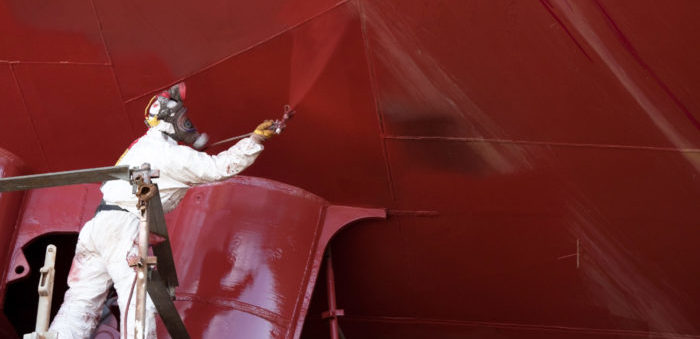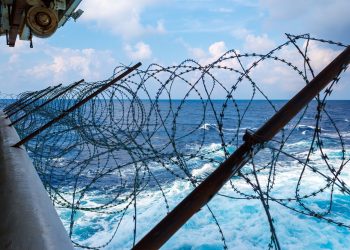A team of environmental geochemists at the University of Oldenberg examined the plastic particles in the North Sea, and found that marine paint may be an underestimated source of plastic microparticles.
The researchers took water samples from various locations in the German Bight. They discovered that most of the plastic particles in the water there originated from binders used in marine paints and coatings.
Our hypothesis is that ships leave a kind of ‘skid mark’ in the water which is of similar significance as a source of microplastics as tyre wear particles from cars are on land
notes Dr Barbara Scholz-Boettcher, who led the study.
In the autumn of 2016 and 2017, Scholz-Boettcher and her colleagues collected the samples with the research vessel ‘Heincke’.
This involved heating the plastic molecules to almost 600°C to break them down into smaller, characteristic fragments, then separated and assigned the different polymer groups based on their mass and chemical properties. This allowed them to quantify the mass of each plastic type.
The team found that the samples contained above all indicators for PVC, acrylates and polycarbonates; these three accounted for approximately two-thirds of the total microplastic content on average and up to 80 per cent in certain samples.
Previously, packaging plastics such as PE, PP and PET were estimated to account for the vast majority of microplastics in the sea, leaking to the ocean from poorly maintained landfill sites, in leachate or dumped illegally in the environment. However, from a more detailed analysis, the researchers found that these plastics were found mainly near the coastline, whereas in the open sea and the Elbe estuary, and especially near major shipping routes. the other types of plastic were predominant.
We believe that these particles originate from ship coatings, where these plastics are used as binders in acrylic paints or epoxy resins
Scholtz-Boettcher said.
These substances could have harmful consequences for the ecosystem, as they contain heavy metals and other additives that are toxic to many organisms. These antifouling components are rubbed from hulls by the wind and waves.
Literature studies have shown that in the EU alone, thousands of tonnes of paint end up in the marine environment every year. The researchers are engaged in further studies, including taking samples from estuaries and sediments, to gain more insights into how microplastics like PVC and acrylates enter the environment.






























































